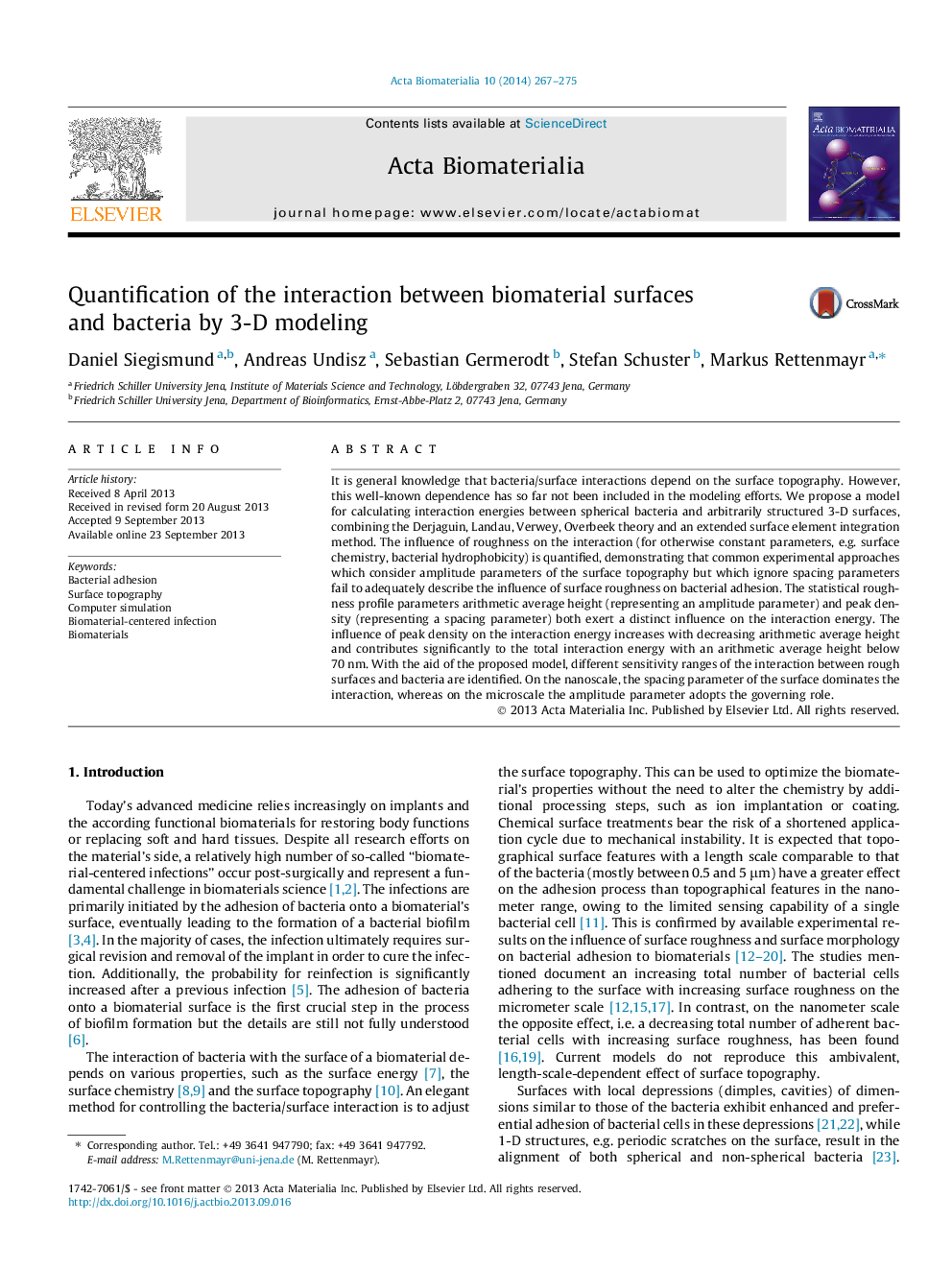| Article ID | Journal | Published Year | Pages | File Type |
|---|---|---|---|---|
| 10159416 | Acta Biomaterialia | 2014 | 9 Pages |
Abstract
It is general knowledge that bacteria/surface interactions depend on the surface topography. However, this well-known dependence has so far not been included in the modeling efforts. We propose a model for calculating interaction energies between spherical bacteria and arbitrarily structured 3-D surfaces, combining the Derjaguin, Landau, Verwey, Overbeek theory and an extended surface element integration method. The influence of roughness on the interaction (for otherwise constant parameters, e.g. surface chemistry, bacterial hydrophobicity) is quantified, demonstrating that common experimental approaches which consider amplitude parameters of the surface topography but which ignore spacing parameters fail to adequately describe the influence of surface roughness on bacterial adhesion. The statistical roughness profile parameters arithmetic average height (representing an amplitude parameter) and peak density (representing a spacing parameter) both exert a distinct influence on the interaction energy. The influence of peak density on the interaction energy increases with decreasing arithmetic average height and contributes significantly to the total interaction energy with an arithmetic average height below 70Â nm. With the aid of the proposed model, different sensitivity ranges of the interaction between rough surfaces and bacteria are identified. On the nanoscale, the spacing parameter of the surface dominates the interaction, whereas on the microscale the amplitude parameter adopts the governing role.
Related Topics
Physical Sciences and Engineering
Chemical Engineering
Bioengineering
Authors
Daniel Siegismund, Andreas Undisz, Sebastian Germerodt, Stefan Schuster, Markus Rettenmayr,
